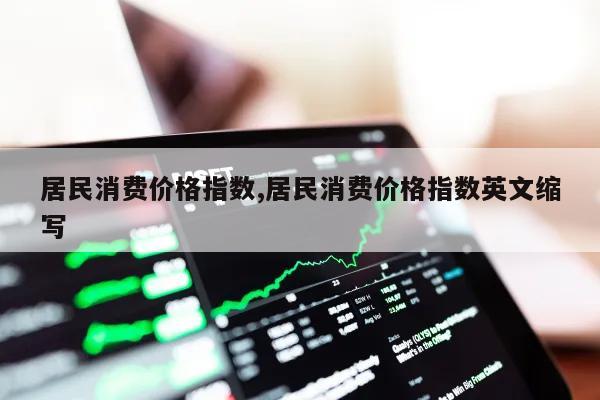居民消费价格指数,居民消费价格指数英文缩写
- 外汇
- 2023-05-17
- 81

Summary: This article will explore the meaning and significance of the Consumer Price Index (CPI) as it relates to the average person's daily life. Through a detailed analysis of the CPI acronym, readers will gain a deeper understanding of how it impacts their finances and purchasing power. With a touch of humor and a healthy dose of detail, this article aims to engage and educate readers on this crucial economic indicator.
1. The Meaning Behind CPI
The CPI, or Consumer Price Index, is a statistical measure that tracks the average change in prices over time for certain goods and services commonly purchased by households. The main purpose of CPI is to provide a general inflation rate that reflects the overall cost of living experienced by consumers. This index is often used by policymakers to make informed economic decisions, such as adjusting interest rates or tax policies.
While the CPI is a valuable tool for monitoring the economy, it is important to note that it is not a perfect reflection of everyone's individual experience. Different people purchase different goods and services, so CPI may not perfectly reflect financial conditions for everyone. Nevertheless, CPI remains a crucial factor in understanding overall trends in the economy.
2. Understanding the Impact of CPI on Daily Life
As consumers, we rely on prices to dictate our daily spending habits and determine our purchasing power. The CPI directly affects the cost of living for households across the spectrum, from those living paycheck to paycheck to those with more disposable income. By tracking the rise and fall of prices, economists can predict inflation rates and adjust policies accordingly.
For example, when the CPI indicates a rise in the price of consumer goods, such as food or gas, consumers may have to adjust their budgets to afford these increased costs. Conversely, if the CPI indicates a decrease in prices, such as during a recession, consumers may have more money to spend and could potentially stimulate the economy. By understanding the CPI, individuals can better predict changes in their finances and make informed spending decisions.
3. Hacks for Navigating the CPI
While CPI may be a complex indicator, there are some simple hacks for staying on top of its changes and using that information to make smarter financial decisions. One approach is to track prices over time and calculate your personal inflation rate to see how your costs might differ from the overall CPI. Additionally, you can research alternative goods or services to purchase during times of high inflation, or adjust your long-term investments based on inflation predictions.
Overall, understanding the CPI is crucial for taking control of our personal finances and being informed consumers. By keeping an eye on this economic indicator and applying its insights practically, we can stay ahead of the curve and make strategic choices for ourselves and our families.
Conclusion: In conclusion, the Consumer Price Index, or CPI, is an important economic indicator that reflects the changing prices of goods and services commonly purchased by households. By tracking these trends over time, economists and policymakers can make informed decisions about inflation rates and monetary policies. As consumers, it is also crucial for us to understand the CPI and apply its insights practically to our everyday lives. By doing so, we can take control of our finances and make smart purchasing decisions.
















